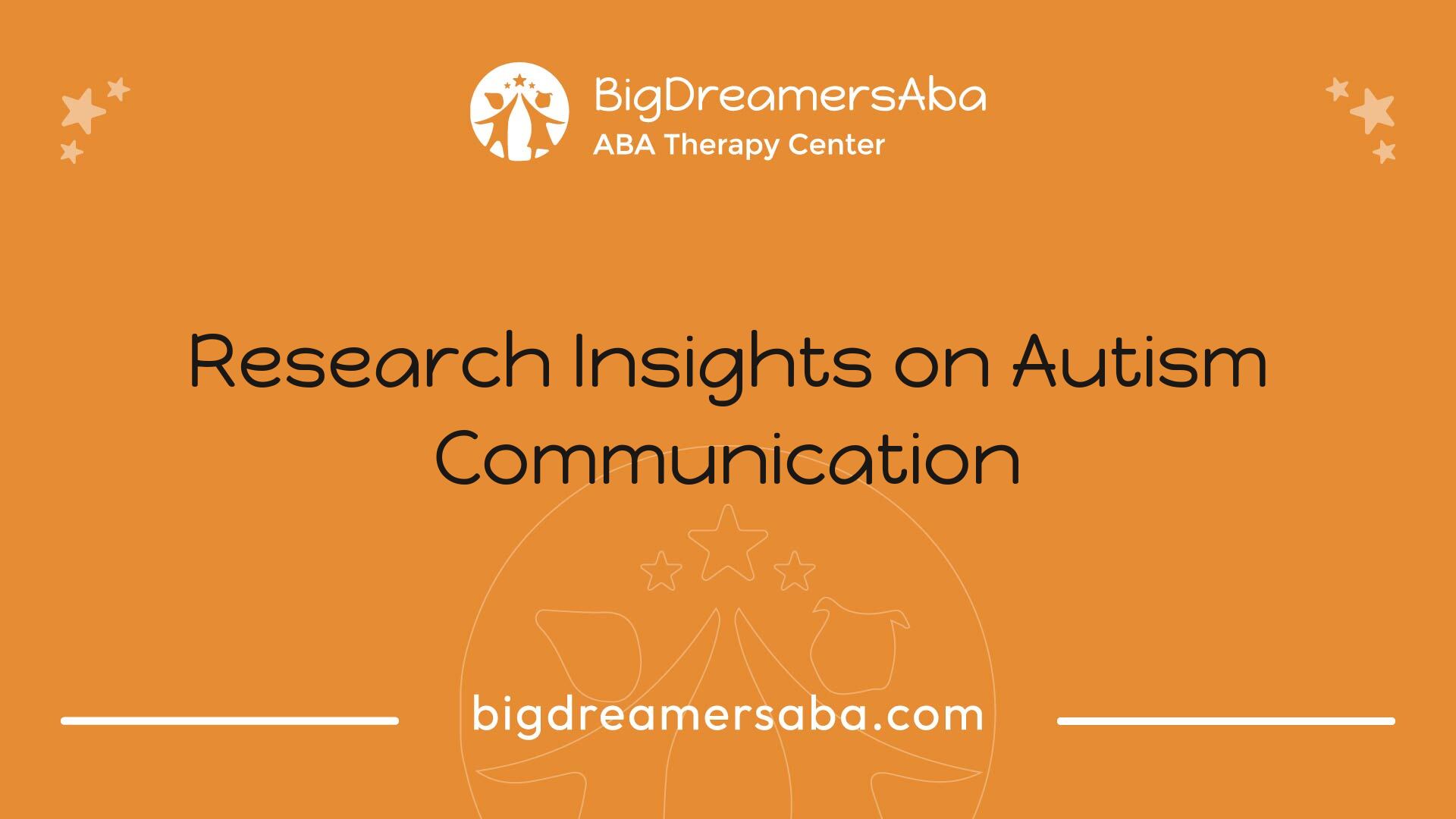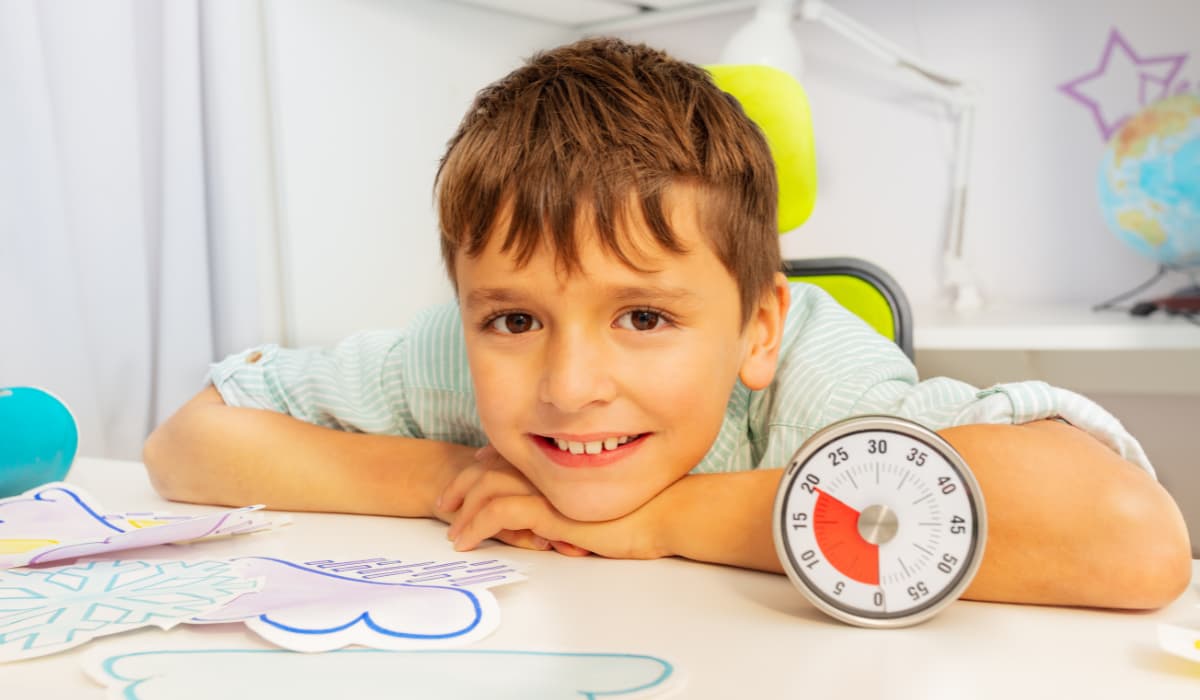The Double Empathy Problem in Autism
Explore the double empathy problem in autism and discover insights to bridge communication gaps and promote inclusion.


Understanding the Empathy Problem
Introduction to Double Empathy
The concept of the double empathy problem in autism refers to a mutual misunderstanding between individuals with different neurologies, specifically Autistic and non-Autistic (allistic) individuals. It highlights the complexities and challenges that arise when navigating interactions across these neurotypes. Research led by Dr. Damian Milton introduced this theory in 2012, framing the disconnect not as a one-sided issue but as a space of misunderstanding that exists between both parties [1].
This theory emphasizes the significance of empathy that transcends mere self-awareness to encompass a greater understanding of others. Autistic individuals often demonstrate improved empathy and rapport when engaging with fellow Autistic individuals. Studies have shown that they typically fare better in communication effectiveness and interpersonal understanding in these interactions compared to engagements with allistic individuals [2].
Interaction TypeEmpathy LevelsCommunication EffectivenessAutistic - AutisticHigherMore effectiveAutistic - AllisticLowerLess effective
This dual empathy framework underscores a crucial insight: individuals who share similar experiences are more prone to forming connections and expressing understanding. This realization can be pivotal in improving the overall well-being and social inclusion of autistic individuals, making it essential to foster environments that enable meaningful interactions among them.
Many autistic activists argue that previous research related to empathy has unfairly stigmatized the autistic community. Traditional theories often placed the blame for misunderstandings squarely on them, contributing to a narrative that dehumanizes their experiences as lacking empathy. This perspective has spurred advocacy for increased representation and inclusion of autistic individuals within research frameworks to address the resulting stigma and its detrimental effects on various aspects of life, including mental health, education, and employment opportunities.
By exploring the dynamics of the double empathy problem, it becomes apparent that fostering understanding and mutual respect between autistic and allistic individuals is vital for promoting empathy across neurotypes. The focus shifts from viewing empathy as a deficiency to recognizing it as a complex interplay of expectations, adaptations, and connections that can exist when people make an effort to understand one another. To learn more about the emotional aspects of autism, visit our article on autism and empathy.
Research Insights on Autism Communication

Understanding communication between autistic and non-autistic individuals involves exploring critical theories and findings by researchers in the field. This section discusses the work of Dr. Damian Milton and Dr. Catherine Crompton, who have provided valuable insights into the complexities of the double empathy problem in autism.
Dr. Damian Milton's Theory
Dr. Damian Milton introduced the concept of the double empathy problem, which emphasizes that challenges in social communication arise between both autistic and non-autistic individuals. He argues that autistic individuals do not necessarily have a deficit in theory of mind, but instead struggle with mutual understanding when engaging with non-autistic individuals. Research backing this theory shows that non-autistic individuals often recognize fewer autistic facial expressions and face difficulties in identifying autistic mental states. They may overestimate their effectiveness in communicating with autistic individuals, leading to a perceived lack of rapport when compared to same-neurotype interactions [4].
The key points of Milton's theory can be summarized as follows:
Key PointsDescriptionMutual UnderstandingChallenges arise for both groups in communicationRecognition of ExpressionsNon-autistic individuals struggle to recognize autistic expressionsOverestimation of CommunicationNon-autistic individuals often believe they communicate better than they do
Further research suggests that interactions between autistic individuals yield additional advantages, such as enhanced social comfort, effective communication of information, and better understanding of social intentions.
Dr. Catherine Crompton's Findings
Dr. Catherine Crompton's research complements Milton's findings by investigating how stereotyping and negative perceptions impact the communication dynamics between autistic and non-autistic individuals. Negative stereotypes of autistic people arise from dominant deficit-based views, which reduce an individual to shared impairments. These stereotypes contribute significantly to socio-communicative breakdowns in interactions, further highlighting the need for improved understanding of the double empathy problem.
Crompton's findings emphasize that autistic individuals often face stigma and discrimination due to societal views. This stigma is particularly pronounced for those with intersecting identities, such as racial minorities. The implications of Crompton's work call attention to the importance of reframing autism discussions around individual strengths and differences rather than deficits. Her insights advocate for methodologies that promote neurodiversity and encourage better understanding between autistic and non-autistic individuals.
Core insights from Crompton's research include:
Key InsightsDescriptionStereotyping ImpactStereotypes contribute to communication challengesSocietal ViewsStigmatization due to negative perceptionsNeurodiversity ImportanceFocus on individual strengths rather than deficits
By addressing the complexities of understanding in communication, these research insights provide a foundational perspective on the double empathy problem in autism, highlighting the need for mutual appreciation and respect among both autistic and non-autistic individuals. For further information on how these dynamics affect autism awareness initiatives, visit our page on autism awareness month.
Communication Challenges and Differences

The interactions between autistic and allistic individuals can often present significant challenges. Understanding these challenges is essential for fostering better communication and empathy.
Autistic vs. Allistic Interaction
Autistic people and allistic individuals frequently struggle to comprehend each other's methods of experiencing and expressing emotions. This difficulty forms the foundation of the double empathy problem in autism. Historically, communication norms established by allistic individuals have been regarded as the "correct" way to communicate. As a result, autistic individuals are often expected to conform to these norms without any reciprocal effort from allistic individuals to understand autistic perspectives.
The theory suggests that when individuals with such different experiences engage with one another, they will both have challenges in empathizing with each other. This view counters the traditional belief that autistic individuals possess impaired 'theory of mind', instead suggesting a mutual empathy issue exists between autistic and non-autistic individuals [3].
AspectAutistic CommunicationAllistic CommunicationEmotion ExpressionOften more literalMay use broader emotional cuesVerbal vs. Non-verbalPredominantly verbalCombination of verbal and non-verbalNorms and ExpectationsUsually less flexibleGenerally more adaptive
Varied Communication Styles
The communication styles between autistic and allistic individuals often differ significantly. Autistic adults tend to exhibit better empathy, rapport, and effectiveness in communication when interacting with other autistic individuals. Studies suggest that autistic-autistic interactions frequently lead to higher interpersonal rapport compared to exchanges involving both autistic and non-autistic individuals. This is because autistic individuals can more accurately understand and predict each other’s thoughts and motivations.
Conversely, non-autistic individuals typically view their standard way of communicating as 'normal' or 'correct'. This mindset can lead them to dismiss the atypical communication methods used by autistic individuals as 'different' or 'incorrect'. Consequently, there is a common expectation for autistic individuals to adjust their communication style without reciprocation from non-autistic counterparts.
These differences in communication styles contribute to misunderstandings that can hinder the development of a truly empathetic exchange. Understanding the nuances of these interactions is vital for bridging the empathy gap and fostering better relationships between autistic and allistic individuals. Organizations, such as the National Autistic Society, have recognized the importance of this understanding and have implemented training programs promoting improved interactions between these groups [3].
Implications and Practical Initiatives
The concept of the double empathy problem in autism has significant implications for how society understands and interacts with individuals on the autism spectrum. This understanding has led to changes in training programs and a shift in the perception of autism.
Influence on Training Programs
Training initiatives aimed at fostering better communication and understanding among individuals with and without autism have been influenced by the double empathy problem. Organizations such as the National Autistic Society, Studio3's ATLASS training, and AT-Autism's Synergy program have incorporated this theory to enhance empathy and understanding in their curriculums. These programs are designed to improve interactions between autistic and non-autistic individuals and ultimately reduce the social marginalization experienced by the autistic community [3].
Training ProgramFocus AreaNational Autistic SocietyEnhancing Understanding of AutismStudio3's ATLASSImproving Communication SkillsAT-Autism's SynergyPromoting Respectful Interactions
By emphasizing the need for mutual understanding and respect in all interactions, these programs aim to bridge the communication gap caused by bidirectional differences in social-cognitive characteristics.
Shifting Perception of Autism
The double empathy problem also underscores the necessity for a shift in how autism is perceived. Recognizing that communication difficulties may result from a lack of mutual understanding rather than deficits in social skills is crucial. Studies indicate that autistic individuals often perform better in empathy and communication when interacting with other autistic individuals. This shift highlights the potential for authentic connections and effective interactions within the autistic community.
This growing awareness fosters a more inclusive mindset, allowing for environments where autistic individuals can thrive. As the perception of autism evolves, so too do the interventions and support systems, facilitating better social inclusion and well-being for individuals on the spectrum. Initiatives that emphasize enabling interactions among autistic individuals can lead to improved outcomes and encourage meaningful connections [3].
To further explore various facets of autism, one can look into resources such as what is the autism spectrum disorder?, autism awareness month, and individualized education programs (IEPs) for autism. By leveraging these resources, the broader community can work towards overcoming misconceptions and fostering a more empathetic understanding of autism.
Bridging the Empathy Gap
Addressing the challenges posed by the double empathy problem in autism necessitates a multifaceted approach. By embracing the neurodiversity perspective and working toward overcoming stereotypes, both autistic and non-autistic individuals can foster greater understanding and empathy.
Neurodiversity Approach
The neurodiversity approach emphasizes valuing the unique strengths and differences that each individual possesses, rather than focusing solely on deficits. This framework promotes an understanding of autistic individuals as having distinct communication styles and experiences that deserve recognition. Methodologies that encourage embracing these differences are more likely to bridge the empathy gap by fostering appreciation for the diverse ways individuals relate to one another [4].
Ultimately, adopting a neurodiversity framework means moving away from traditional deficit-based views that portray autistic individuals as lacking or impaired. Instead, it highlights the rich variations in experiences and skills that autistic individuals may possess, encouraging collaborative dialogues that acknowledge both similarities and differences.
Overcoming Stereotypes
Stereotyping the autistic community results from insufficient understanding and can exacerbate the double empathy problem. Such stereotypes often arise from a narrow focus on shared impairments, leading to an "us vs. them" mentality that fosters division. This can manifest in discrimination and stigma, particularly affecting individuals with overlapping identities within the autistic spectrum.
To mitigate these stereotypes, it is essential to educate the general public about the true nature of autism and its diverse manifestations. Efforts should focus on sharing personal narratives of autistic individuals, challenging misconceptions, and promoting awareness during events such as autism awareness month and world autism month.
Creating environments where both autistic and non-autistic individuals can engage in open dialogues will also help to dismantle preconceived notions and facilitate mutual understanding. Encouraging participation in support programs and discussions, such as those found in local arkansas autism resources and indiana autism resources, can further support these aims.
Overall, bridging the empathy gap in the context of the double empathy problem hinges on recognizing and embracing neurodiversity, as well as actively working to overcome stereotypes.
Impact of Double Empathy Problem
Social Inclusion and Well-being
The double empathy problem in autism reveals the complexities and nuances of mutual understanding between autistic and non-autistic individuals. Autistic individuals often encounter barriers to social inclusion due to misunderstandings rooted in differing communication styles. These barriers can lead to feelings of isolation, stigma, and mental health challenges for both groups. Both autistic individuals and their non-autistic peers may struggle to empathize with each other, underscoring that both communities can benefit from improved communication and shared experiences.
Barriers arise from stereotype-based views that reduce autistic individuals to a set of deficits, which can lead to discrimination and marginalization. Moreover, the misinterpretation of behaviors can further contribute to negative interactions. Fostering social inclusion and well-being for autistic individuals entails:
Research indicates that inclusive practices can enhance both mental health and employment opportunities for autistic individuals, leading to a richer participation in society.
Recommendations for Better Understanding
To bridge the empathy gap between autistic and non-autistic individuals, it is essential to prioritize a better understanding of the unique perspectives each group holds. Effective methodologies that promote neurodiversity can help dismantle stereotypes and foster acceptance. Here are some actionable recommendations for improving understanding:
RecommendationDescriptionFocus on IndividualityAvoid deficit-based views and emphasize unique traits of autistic individuals. Recognizing individual differences fosters empathy.Inclusion in ResearchInclude autistic individuals in research initiatives to ensure diverse perspectives are represented and respected [2].Shared ExperiencesEngage communities through shared reading and activities, such as literature that emphasizes various perspectives, to promote empathy.Awareness CampaignsConduct autism awareness campaigns to educate the public about the double empathy problem and the value of neurodiversity [6].
Tackling the double empathy problem requires a collective effort from both autistic and non-autistic individuals to foster better understanding and communication. By approaching the issue from a neurodiversity framework, individuals can build empathy and respect across the autism spectrum, ultimately leading to enhanced social inclusion and coexistence.
References
[2]:
[3]:
[4]:
[5]:
[6]:
Recent articles
.jpg)
Preparing Kids With Autism for School Transitions and New Routines

Parent-Child Connection Beyond Therapy: Turning Daily Life Into Learning
